




THE
DAILY EMERALD
The Daily Emerald is published by Emerald Media Group, Inc., the independent nonprofit media company at the University of Oregon. Formerly the Oregon Daily Emerald, the news organization was founded in 1900.






THE
The Daily Emerald is published by Emerald Media Group, Inc., the independent nonprofit media company at the University of Oregon. Formerly the Oregon Daily Emerald, the news organization was founded in 1900.
Summary: Studio Ghibli is Japan’s most famous animation studio. ItStudio Ghibli has created 22 hand-drawn films. Though founded in Japan, many of the films have had great success in the United States. “Princess Mononoke” follows Ashitaka as he tries to weave harmony amidst a war between humans and nature. Although he is a human who was cursed by an animal god, he believes both sides should be at peace. This task proves harder than expected, as both sides view Ashitaka as a traitor.
Recommended by: Hana Matsuno, senior, sociology major. “Like it has moments in the forest that are really calm and pretty between the action so it feels serene in some moments, which I like.”

“Courts disagree over the constitutionality, feasibility of Measure 114” by Caleb Barber

“Eugene’s best late-night restaurants” by Nick LaMora
Scan here or visit the Emerald’s social media to participate in our next Voices of UO. “What has been your most played song in 2023? Why do

Do you want your voice heard literally? Scan here to respond to our Voices of UO prompt with a brief voice message, and head to www. dailyemerald. com/ multimedia/ podcasts/ next week to listen to the replies!



We want to hear from you: Email editor@dailyemerald. com to submit a tip or a letter to the editor. The ideal length for a letter is 200-500 words, but we publish letters of various lengths online.
For updated coverage of sports and digital-exclusive content, go to www.dailyemerald.com


The goal of this survey is to help the Daily Emerald determine who our publication is reaching on campus and how we can do a better job addressing the needs and interests of the communities we serve. We thank you for your feedback!
you listen to it?”Voices of UO
A larger customer base and its greater dependence on electricity over fossil fuels as well as an industry-wide concern over hydroelectric power regulation were contributing factors to Eugene Water and Electric Board’s 2022 Integrated Resource Plan.
The plan is a projection of EWEB’s energy composition needs going into the next decade based on the company’s analysis of its current sources of electricity.
EWEB is seeking public input before the IRP is finalized in June. In a media release, EWEB Communications Specialist Aaron Orlowski said EWEB is actively looking to meet with community groups and environmental justice organizations for dialogue about the analysis conducted in this plan.
Fossil Free Eugene, a coalition of grassroots organizations that have continuously urged the city of Eugene to move away from natural gas, frequently organizes climate testimonies at Eugene city council public forums. It advocates for the banning of natural gas in new construction in the city by Jan. 1 and the transition of all city utilities to 100% renewable energy by 2030.
At a Eugene City Council public forum in November 2022, more than a hundred Eugene residents turned out to urge the Council to ban the use of natural gas utilities in new construction in the city by January of 2023.
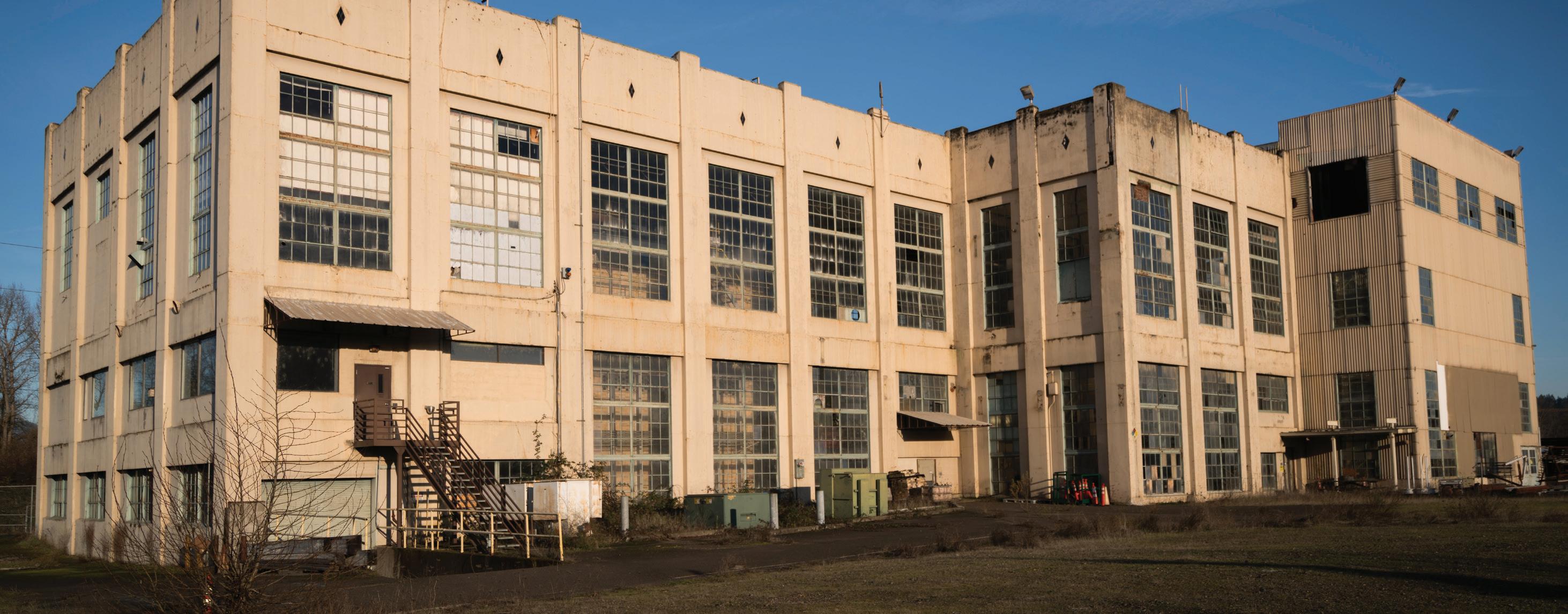
Eliminating natural gas use in residential buildings would cause Eugene residents to switch their homes to all electric, Orlowski said, and people wonder if that type of ban would be too much for EWEB to handle.
Orlowski said that EWEB estimates 25% of homes in Eugene use natural gas for heating or cooking and a ban on natural gas in homes in Eugene would cause demand for electricity to rise about 1% per year.
The plan also projects an increase in demand associated with more electric vehicle usage in the coming decade. Oregon’s Environmental Quality
Commission recently approved a ban on the sale of new gas-powered vehicles in the state by 2035, which would increase the amount of electric vehicles on Eugene roads. The IRP estimates that this would increase electricity demand by about 2% per year until 2030.
EWEB’s previous IRP informed its decision to respond to increased demands of electricity with incentives for customers to reduce their electricity consumption. If EWEB saw that electricity demand was going to rise, it would increase the incentives it gave to customers to reduce their electricity consumption. Those incentives include rebates for electric heat pumps or installing insulation to reduce the amount of electricity EWEB customers use in their homes.
“Different renewable energy resources have dropped in price a lot,” Orlowski said in an interview with the Daily Emerald. “It’s way cheaper today to get wind and solar than it was 10 years ago, but some of the types of energy resources that we relied on for a long time are potentially facing some new restrictions in the future.”
The IRP projects a rise in demand for electricity from now until 2030.
“People are switching out their gasoline powered cars for electric vehicles, and they’re switching out their gas furnaces for electric heat pumps,” Orlowski said.
EWEB’s sources of electricity are 90% carbon free, with about 80% of its composition being made up of hydroelectric power generated from dams operated by the Bonneville Power Administration, Orlowski said.
The IRP anticipates regulations protecting fish species in the Willamette Valley will impact the feasibility of its hydroelectric energy sources.
“We don’t know how climate change might impact river flows, or if there will be new regulations to continue to protect fish species like salmon,” Orlowski said.
Already, in EWEB’s first Board of Commissioners
meeting of 2023, commissioners unanimously voted to move forward with the process of decommissioning Leaburg Dam. EWEB shut down the Leaburg Hydroelectric Project in 2018 due to internal erosion and seismically vulnerable soils along portions of the Leaburg Canal.
While erosion and water flow are important considerations for EWEB to make when determining when to decommission a hydroelectric project, Orlowski said that future policy protecting salmon species may also impact the decision to decommission a dam.
For instance, the Lower Snake River Dam, a significant source of EWEB’s hydroelectric power, is currently being considered for removal due to its disruption of salmon runs throughout the year.
Removing the dam would take years, so while discussion for the dam’s removal is ongoing, Orlowski said it’s not an imminent concern for EWEB, though the IRP still accounts for the possibility of the removal of dams like these before 2030.
The City of Eugene projects significant population growth in the coming decade. Envision Eugene, an advisory committee focusing on the city’s urban growth and housing availability, estimated in 2022 that the number of people living in Eugene by 2032 will increase by almost 34,000.
EWEB’s major challenges with integrating wind and solar into its energy profile is the transmission and storage of that energy. Building new transmission lines is a major hurdle to many of the energy companies in the state, Orlowski said.
“Building a transmission line requires crossing the property lines of a lot of different property owners,” Orlowski said. “You have to get them all to sign on and work together, and that can be really challenging to do.”
EWEB estimated in this IRP that transmission in a decade will be the same as it has been in order to make as accurate a prediction of future electricity output as possible.
A month-and-a-half strike of graduate and part-time workers crippled the University of California system, another prominent example of the growing labor movement in the United States.
BY EMILY KAVANAGHIn mid-November of 2022, 48,000 University of California academic workers, mainly graduate students, went on strike. Across all UC campuses, the United Auto Workers 2865 union — which represents academic student employees — demanded wage raises and more protections. The strike disrupted campus life as union members formed picket lines, refused to grade final exams and halted research projects. These workers were from four different groups of academic workers: postdoctoral scholars, academic researchers, graduate student researchers and academic student employees, which each form their own bargaining unit. As of now, the strike is the largest of its kind in history.
Willa Gibson, a second year undergraduate student at UC Davis and member of the UAW on campus, said joining the effort was “a no brainer once the strike vote got passed.”

A large reason why UC student workers have asked for more pay is the problem of being rent burdened, which means spending 30% or more on housing costs. The price of housing in and around UC campuses has continued to rise in a state where the cost of living is already 41% higher than average.
“I’ve never felt more proud to go to a UC,” Gibson said. “A massive community came together.”
Academic power on this level has never been wielded so strategically and with such a united front before. At most large universities, the labor of student and part-time workers is indispensable. This means that a vast majority of them going on strike completely froze many operations, especially for undergraduate students and research. With no one to grade papers for the large lecture classes or teach discussion sections, their strength was made clear.
On Dec. 23, 2022, after six weeks of striking, a tentative agreement between the union and the UC administration was reached. A two-and-a-half year contract was ratified, which included a minimum salary of about $34,000 for part-time employees and more child and health care benefits across the board.
“Our bargaining team has worked very hard to get us here, and [the contract] isn’t about what we deserve but what we can get,” Gibson said.
After the duration of the contract is up, the bargaining process will begin again, giving the UAW an advantageous position. The gains accomplished in the UC system have also had an effect on academia as a whole.
“It’s so cool seeing how this created a domino effect across the U.S.,” Gibson said. “A lot of schools are starting to feel more empowered.”
For example, part-time and adjunct faculty members at the New School in New York City went on strike on Nov. 16, 2022 for better pay and conditions. In response, the school threatened to cut their health benefits and to
withhold their pay. However, three weeks into the strike, an agreement was reached, as almost 90% of the college’s classes are taught by untenured staff and many classes were completely cancelled as a result of the strike.
“The reality is that this is something we needed to do,” Gibson said. “It will make the UC system even better at educating its students.”
The amount of labor and care that graduate students and adjunct professors give to their students impacts so much about student life and they deserve to be properly compensated. Academia needs to change, whether the top administrators of universities like it or not.
Many economic indicators display that the labor movement is gaining momentum. The exploitative corporate status quo in the U.S. is getting its first real run for its money in decades. With these persevering students and workers leading the helm, the future will hopefully be ripe with solidarity and progress.






Winter Warm Up - Campus Tours
EMU O Desk 11 a.m.-1 p.m.
Tuesday Treats EMU, near the O Desk 1 p.m.-2 p.m.
GlobalWorks International Internships Information Session
EMU, Mills International Center 3 p.m.-4 p.m.
MLK Day of Service The Holden Center 8:45 a.m.- 1 p.m.
ASUO-TFAB Tuition Forum
EMU Ballroom 6 p.m. - 7:30 p.m.
Environmental Justice Speaker Series
EMU Coquille Room 5:30 p.m. - 6:30 p.m.
Monday Game Nights EMU, near the O desk 6:00 p.m.-7:00 p.m.
Tabletop Gamefest-Palooza EMU Crater Lake rooms 6:00 p.m.
Student Food Pantry
710 E. 17th Ave. 4:00 p.m.-6:00 p.m.
Native Studies Research Colloquium
Many Nations Longhouse 3:00 p.m.-4:30 p.m.
Soul2Soul
Lyllye-Reynolds-Parker Black Cultural Center 5:30 p.m.
Men’s Basketball Vs. Arizona State
Matthew Knight Arena 6 p.m.
Climate Resiliency Button Making
EMU, O desk Noon- 2 p.m.
UO Surplus Furniture Sales Romania Warehouse, 2020 Franklin Blvd. 12:30 p.m.-2:30 p.m.
Oregon: Where Past is Present exhibit Museum of Natural and Cultural History 10 a.m.-5:00 p.m.
Men’s basketball vs Colorado Matthew Knight Arena 6:00 pm
Free First Friday at the Museum

Museum of Natural and Cultural History, 10:00 a.m. - 5:00 p.m.
winter term under way,
With
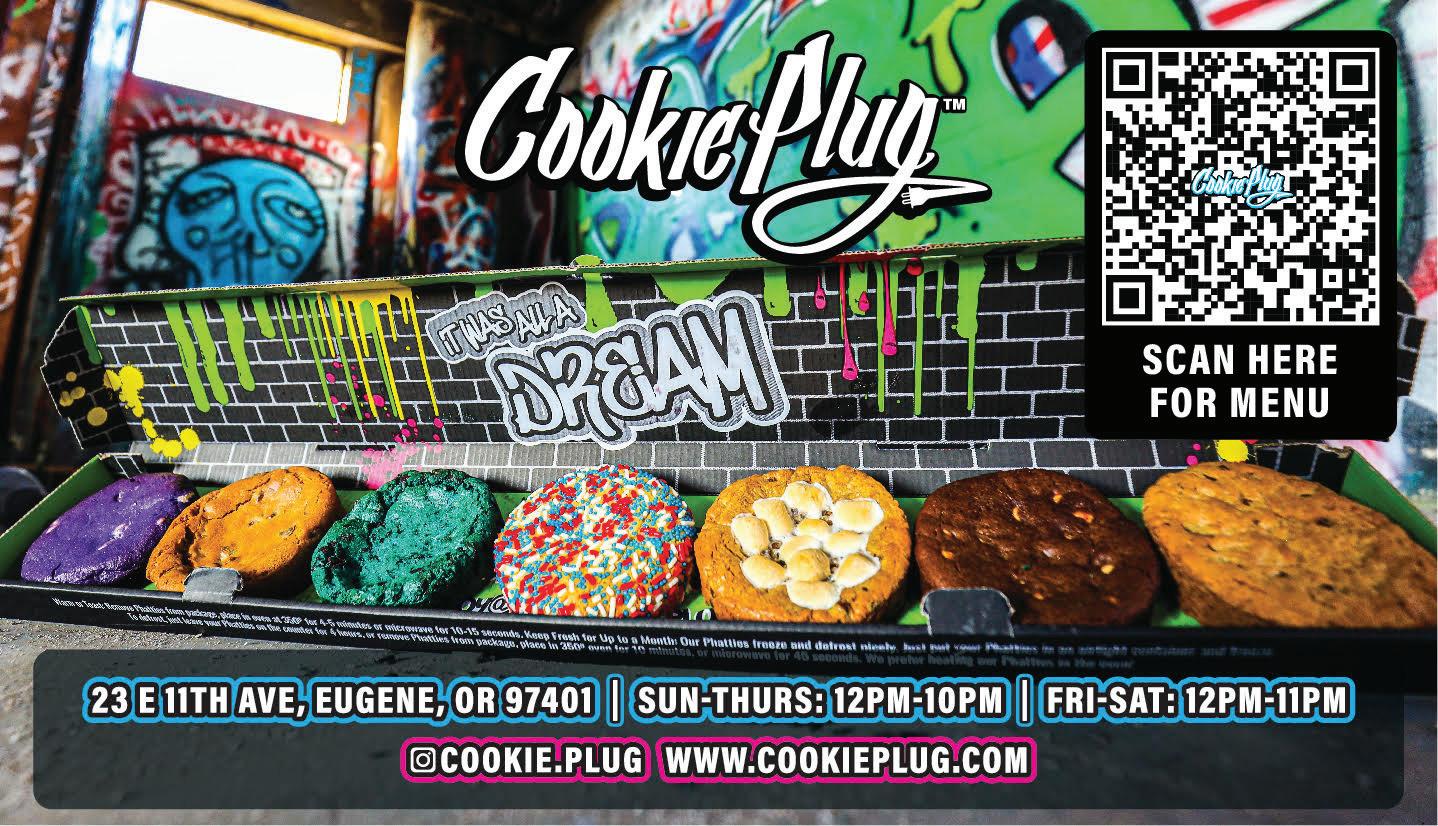














A dorm housing shortage caused by over enrollment has been addressed, but how else has over enrollment affected students and why did it happen in the first place?
BY JAKE MOOREThis school year, the University of Oregon welcomed its largest freshman class ever. 5,338 freshmen reflects a 16% increase to freshman enrollment from the previous year, which also had a record-breaking number of freshmen for UO.
The record enrollment rate outsized UO housing and caused a housing shortage early fall term 2022. As a solution, community rooms in dorms were converted into temporary dorm rooms. Unfortunately, the effects of over enrollment haven’t been isolated to the dorms.
The sizable freshman class has already caused large classes to get even bigger, according to Graduate Educator Nahla Bendefaa.
Dining halls are seeing massive lines and waiting times due to chronic understaffing, according to UO student dining worker Alex Goodwin.
UO’s increased enrollment comes at an odd time when college enrollment rates around the country are down, according to the National Student Clearinghouse Research Center. Oregon is not an exception to the decrease, according to the Oregon
Higher Education Coordinating Commission.
UO is one of the few schools in the country that has seen a rise in enrollment rates following the pandemic. In Oregon, overall enrollment at public institutions — two year and four year schools — dropped by 1% this year.
University of Oregon and Oregon State University were the only two Oregon schools to see an increase in full time enrollment according to the HECC.
According to Roger Thompson, Vice President for Student Services and Enrollment Management, each year there are students that accept a spot at the UO that don’t show up. This year, the rate of no shows was much lower than normal.

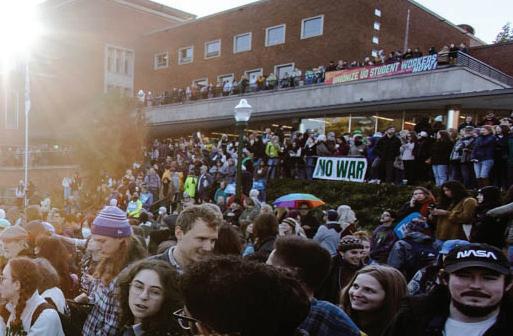
Despite the problems caused by over enrollment, Thompson sees this year’s enrollment rates as a major success.
“We’re really proud of this year’s entering class,” Thompson said. “This group brings a 3.76 high school GPA; that’s the highest on record ever at the University of Oregon.” He added this is also the
most diverse class in school history.
He said his positive outlook on this year’s enrollment is largely impacted by something called the demographic cliff — the idea that college enrollment will drop as national birth rates slow. Thompson hopes this year’s enrollment numbers are a sign that UO can weather any potential storm.
Thompson said he expects UO will have to become more competitive with other schools in order to maintain current enrollment levels.
“I think a lot of universities are trying, including ours, to position ourselves for the demographic cliff when it comes,” Thomson said. “Having nicer facilities to live in, academic facilities, recreation are very important because there will be fewer students from which to choose.”
As the university focuses on preparing for an expected drop in enrollment, students and staff are adjusting to the impacts on campus.
Two weeks before the fall term began, GE and PhD student Nahla Bendefaa found out the
cap size for the class she would be teaching, J201, was raised from 200 to 220.
Bendefaa and the other GE for J201 would split the grading down the middle, meaning for her first term as a PhD student Bendefaa would take on grading the work of 110 students, who were mostly first years, according to Bendefaa. She was originally told she’d be responsible for 70 to 80 students.
“Being a PhD student in and of itself is a full time job,” Bendefaa said. “The workload can be anywhere between 20 to 40 hours just for your coursework itself.” On top of the class work graduate students are also expected to be conducting research toward their final thesis.
Many graduate students, like Bendefaa, also take on positions as GEs. They are expected to spend 16 hours a week in class, holding office hours and grading assignments, and that commitment can fluctuate by about four hours week to week, Bendefaa said.
She said the spikes in work are normally during the busiest times of the term. “Whenever we have grading, those are the points in the term when we also have our assignments when we are in coursework,” Bendefaa said. “If I’m grading your finals, I’m working on my finals.”
As grad students are dealing with larger work loads from higher than expected class sizes, UO dining staff is now dealing with serving the largest freshman class in UO history.
Alex Goodwin is a UO senior who has worked in UO dining for four and a half years. He is a fifth year UO Honors College student studying sociology with a minor in race and ethnic studies.

Goodwin has experience working in nearly every part of UO dining, including the former Hamilton dining hall, the dining department offices and the new Unthank dining hall. Goodwin even came back after being part of a massive layoff of dining workers at the beginning of the COVID-19 pandemic.
Currently Goodwin works at the PNW Public Market dining hall in Unthank. The PNW Public Market has seven dining venues for students. According to Goodwin, Unthank rarely has the staff to open all of them at once.
He said dining has always
seemed to be a bit short staffed even when he worked at Hamilton dining before the pandemic: “We were always kind of short, but the differences compared to now it just seems like it was a cakewalk in hindsight.”
While Goodwin said dining workers have often been overworked and lines in Unthank seem longer, there has been one benefit to a large freshman class: more potential employees.
“It’s gotten a bit better. But that’s only because of the people that we’ve been able to get from the freshman class,” Goodwin said. “The only benefit of such a large quantity of new students coming in is that there’s more students to recruit to be workers.”
The only benefit of such a large quantity of new students coming in is that there’s more students to recruit to be workers.”ALEX GOODWIN UO student dining worker The Ducks crowd surfs through a packed student section during the third quarter. The University of Oregon Ducks take on the Stanford Cardinal on Oct. 1, 2022 at Autzen Stadium in Eugene, Ore.(Maddie Stellingwerf/Emerald)
 BY LAUREN LEONE
BY LAUREN LEONE
The Davis Restaurant & Bar, located at 94 W Broadway, has been one of my favorite places to go for a fun night of drinking with friends and dancing the night away. Commonly referred to as “The Davis,” I had no idea that the empty floors perfect for dancing are filled with tables and chairs, only hours prior.
This restaurant by day and nightclub by night is undoubtedly one of the hottest spots in Eugene. The Davis usually boasts a line down the block almost every weekend, which will remain till the wee hours of the morning.
I encourage any interested readers to show up early and get your hand stamped so you can skip the line upon reentry. Once you’ve gone through security and you enter the restaurant turned club, you’ll have to check your bag at the door, so make sure you have a few dollars on you, or leave the bag and pocket your essentials.
The Davis is constantly flowing with loud music coming directly from the DJ booth at the front of the dance floor. The music ranges from mainstream music to R&B and even a bit of reggaeton.

After spending a few weekend nights and a birthday celebration at the Davis, I let my curiosity take over to see
what kind of restaurant the Davis really is.
The familiar room that I was accustomed to was filled with tables and chairs, and the brighter lighting was quite the improvement from the dark and moody club lighting. The atmosphere at the Davis is warm and inviting and the employees were charismatic and helpful.
The menu at the Davis is definitely on the pricey side, with their larger plates averaging about $22. This meaty menu is filled with mouthwatering options like a grilled sirloin steak, panseared salmon, house bacon mac & cheese, and a Davis burger, to name a few.
If it’s the price you’re worried about, I encourage you to check out their quick bites and small plates menu. There are options like crispy Brussel sprouts, fungi fries, and a warm soft everything pretzel on the quick bites menu, and items like chili garlic wings, cheddar biscuit pork sliders, and chicken & mushroom dumplings on the small plates menu. The prices range from $5 to $16 and there are plenty of options for every dietary restriction and preference.
I ordered the chicken and mushroom dumplings as well
as the crispy brussels sprouts and to say I enjoyed my meals is an understatement. The presentation was impressive and made my appetizers all the more satisfying. The two meals were full of flavor and I devoured every last bite.
I couldn’t resist a peek at the dessert menu and let me just say I will definitely be coming back. Between the options of creme brulee, tiramisu, and chocolate orange pot de creme, I think I’ll have to try them all!
On top of an amazing dessert menu, the list of cocktails is just as impressive. There’s certainly a drink for every cocktail lover ranging from a spicy cucumber margarita to a prickly pear mule, and a strawberry mezcal press.
After my delicious dinner, I can confidently say that The Davis Restaurant & Bar does it all. They’ve mastered the seamless nightly transition from a fancy and flavorful restaurant to a popular and energetic bar.


































































































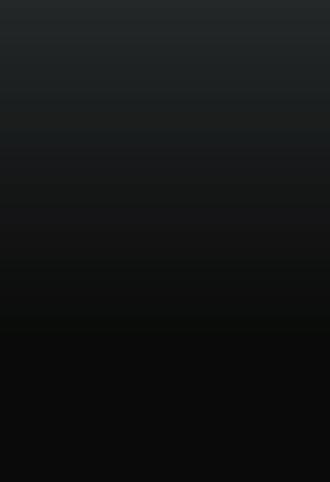
















































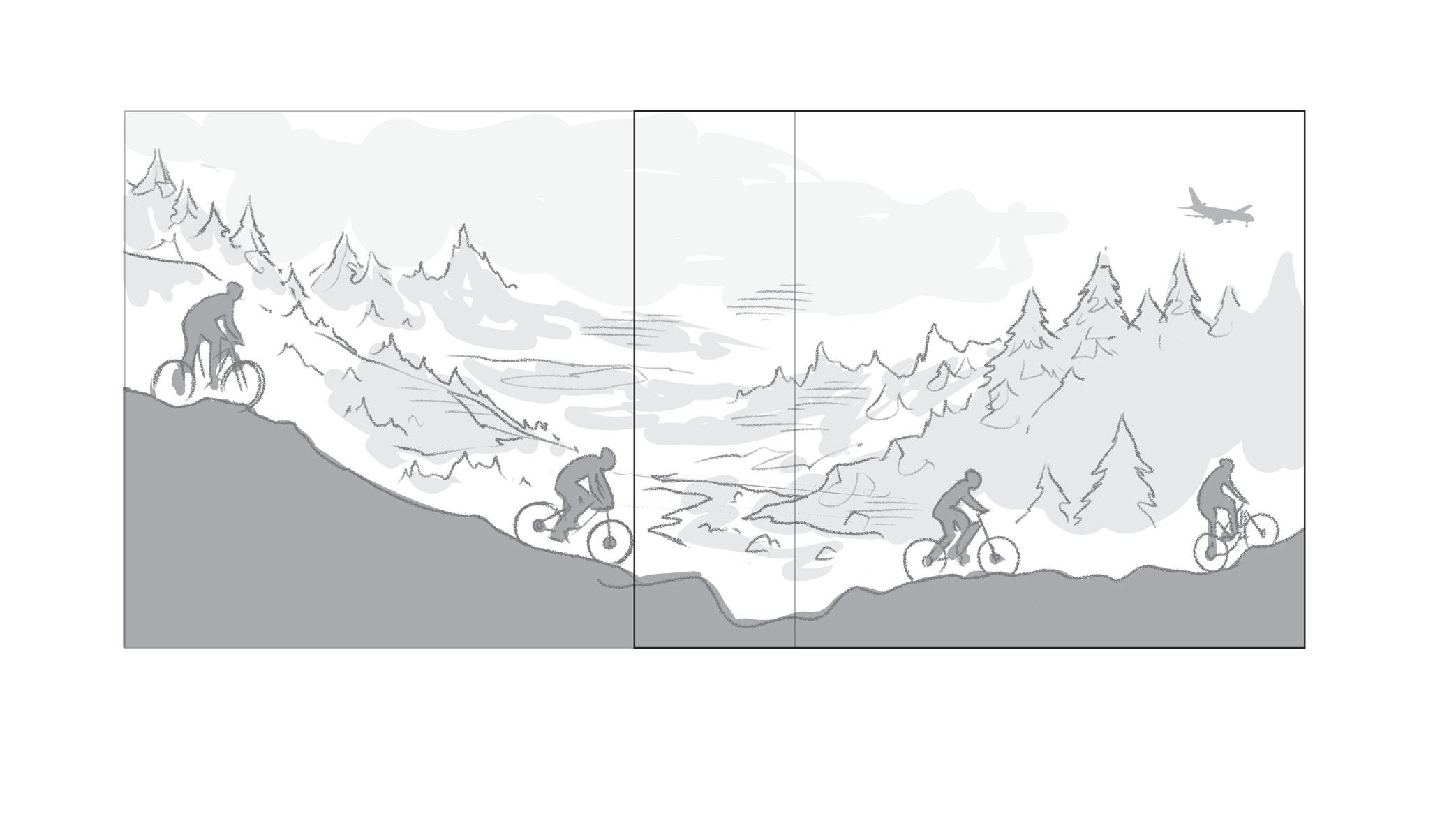















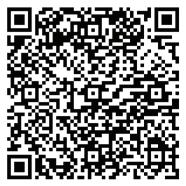















These four live albums prove that the true essence of a musician’s artistry best reveals itself through live performance.
BY EVAN HUNTINGTONThe rapture and exclusivity of a live performance are unlike any other musical experience. The ambience of the room, the eager crowd, the cracks and slight imperfections in the singer’s voice and the original arrangements of songs you know by heart all deliver an incomparable quality. Capturing these live moments on record can feel more human, raw and authentic. It feels real, like you’re standing right in the middle of it. These four live sets encapsulate these qualities, each of which helped to make these artists legendary while deepening their legacy in the process.
“MTV UNPLUGGED IN NEW YORK” BY NIRVANA (1994)Nirvana’s revered performance for MTV’s booming “Unplugged” television series is as incredible as it is tragic. Recorded in the fall of 1993, nearly five months before Kurt Cobain’s death, nobody knew this would be one of their final moments for the world to witness. Rather, it seemed like a glint, a mere seed, of everything the grunge supergroup would blossom into in their even brighter future ahead. Intentionally leaving out their main hits — save for “Come As You Are,” the second performance of the night — the set is stocked with deeper cuts like the intimate yet yearning “Pennyroyal Tea” and the dirty, disheveled groove of “On a Plain.” Much of the set is also defined by their reimagining of several unexpected covers, including their rendition of David Bowie’s “The Man Who Sold the World” and the jolting, standout closer of Lead Belly’s “Where Did You Sleep Last Night,” a performance that will send chills down your spine. The group is even joined by Cris and Curt Kirkwood of the Arizona rock group Meat Puppets, dedicating a chunk of their set to perform three of their songs alongside the brothers. A night of unforgettable moments that defied nearly all expectations, Nirvana felt more personal and close to their audience than ever before. The shift from their typical roaring growl and noisy feedback to an intimate, acoustic sound was executed with ease, showing the expanse of their versatility and their limitless potential. They shined bright on that stage that

night, and the devastating end of the group only a few months later only added to the mystique and mythology of that night in New York.
It’s no wonder they called this man “The Hardest Working Man in Show Business.” Famously selffinancing the show at the historic Apollo Theater in Harlem, Brown set a precedent for the future success of live albums. King Records head Syd Nathan saw no use in the release of live recordings without any new material, having no previous history as a profitable move. Taking the matter into his own hands, Brown proved him wrong. The release was a massive hit, amplifying his charismatic style early in his career and setting the ground for a series of many more live albums to come. Within its swift 32-minute run time, it’s action-packed, filled with the jubilant fervor that made the “Godfather of Soul” who he was. The intoxicating “Lost Someone” takes you on a ride through its nearly 11-minute runtime, while the sweet ballad of “Try Me” drips with longing and aching desire that leaves you itching for more of his effortless charm. “Live at the Apollo” not only magnified Brown’s success as a soul icon, but also the success and importance of the live album itself, setting an example for countless more to come.
It had been nearly 10 years since the global superstars of French house duo Daft Punk went on tour, so when it was time to make their grand return to the stage at Coachella in 2006, they gave the approximately 40,000 people in attendance the night of a lifetime. “Alive 2007” captures the identical set performed the next summer in Paris, putting on a masterclass of engineering, creativity and artistry. Their exhilarating and infinitely inventive mashups of tracks across their catalog display a weaving tapestry of their signature buzzing, pumping house anthems, projected amid an enthralling spectacle of lasers and lights galore. Standing on their famous light pyramid, the duo owned the sea of thousands in their larger than life performance, and the recontextualization of their greatest hits in its monstrous nature gave house
music a mainstream platform to be performed at the previous magnitude of arena rock. And though the album consists of all existing material, each mashup is meticulously mixed and crafted in a way that makes the project feel brand new. The album’s epic grandeur even scored them a Grammy Award in 2009 for Best Electronic/Dance Album.
By the late-60s, Johnny Cash had reached a dramatic lull in his commercial career and successes. Dealing with drug and alcohol addiction, the fading country star was in dire need of a career reboot. Then in 1968, he found the answer in the namesake of his 1955 chart-topping hit “Folsom Prison Blues,” recording a new live album for a room full of rowdy, ecstatic convicts at California’s Folsom State Prison. The result, “At Folsom Prison,” reached the country chart’s peak and cemented his outlaw persona and rugged twang, bringing him back into the spotlight and revitalizing his career. The rambunctious crowd of prisoners brought their raucous applause and cheer as Cash told stories of incarceration (“I Got Stripes,” “25 Minutes to Go”), murder (“Folsom Prison Blues,” “Cocaine Blues”) and pure humor (“Flushed from the Bathroom of Your Heart,” “Dirty Old Egg-Suckin’ Dog”). His entertaining magnetism and crisp performances make for an amusing listening experience, one that resonated with a new generation that brought his stardom to greater heights. He went on to record more prison shows, but his redefining Folsom performance saved his status as a country icon in an unexpected way. Who would’ve thought the scene of a massive career turnaround could be found in the slammer?
A live version of a song can reveal the true emotion and passion for what the song was truly meant to be. It’s conveyed in its most candid, naked state, and sometimes a perfected studio recording can’t always achieve that feeling in the same way. Live albums may not be what you’re used to throwing in rotation, but within them, there’s a whole world to explore. Get lost in these immortalized moments, these timeless nights captured on tape, that we’re blessed enough to relive.
































It’s really hard to believe that Oregon men’s basketball started the season ranked No. 21. Especially considering it took the team over an entire half of play to score 21 points. The Ducks (8-7, 2-2 Pac-12) averaged barely one point per minute in their demeaning 68-41 loss to Colorado (10-6, 2-3 Pac-12) in Boulder on Thursday night.
Brennan Rigsby – a JUCO transfer from De Beque, Colorado – led the team onto the court for warmups, but had far from an ideal homecoming. Rigsby had 8 points, one assist and three rebounds – and incredibly, he was Oregon’s third highest scorer in a game where nobody had more than 10 points.
The Ducks’ were finally healthy again with center Nate Bittle, guard Jermaine Couisnard and forward Ethan Butler all in the lineup for Oregon. But no combination that Dana Altman tried found any success against Colorado’s defense.

He struggled to find a balance between getting Couisnard and Bittle back into the flow of the offense, while also trying to compete with the Buffaloes. It ultimately resulted in the Ducks’ worst shooting performance in Altman’s time at the helm. Oregon’s 41 points scored are also the fewest since March of 2009. The Ducks had three assists throughout the forty minute game – also a low under Altman.
The Buffaloes were without KJ Simpson –arguably their best player – and Oregon finally
seemed healthy again making the 27 point loss even more absurd.
The Ducks had no answers for Colorado’s Tristan da Silva. The junior forward had 30 points – more than any three Ducks combined – seven rebounds and three assists. Had he not been subbed out late in garbage time, he may have outscored Oregon himself.

The three point shooting woes from earlier in the season returned on Thursday. The Ducks were 1-of-14 from three point range, and the one shot they made was 16 minutes into the second half. Oregon was also uncharacteristically outrebounded 46-28. Colorado had more rebounds than the Ducks had points.
Oregon shot a measly 57.1% from the free throw line — an issue, unlike the rebounding, that’s plagued this team throughout the season. Colorado gifted Oregon 18 fouls, and it didn’t matter at all. The Ducks were also 26.9% on field goal shooting and 7.1% from three point range.
If there wasn’t already enough talk of Will Richardson’s inconsistencies, then Thursday certainly didn’t do him any favors. He played 30 minutes, scored five points and had one assist. Rivaldo Soares – who continues to start games for the Ducks – had more fouls than points in 25 minutes of play.
Oregon fell to 8-7 on the year and 2-2 within the conference and is still looking for its first road win of the season.
The Buffaloes are unranked, but Oregon did its best to make
them look like they were. There aren’t many other ways to describe the heinous play that Oregon displayed in Boulder on Thursday.
The loss can be blamed on altitude sickness, an off night or even a new year’s funk. But the injury excuse won’t cut it anymore. So, this team is running out of cards to play to explain these losses and time to put together a win streak if they want any chance of an NCAA Tournament appearance.
The Ducks beat Utah (12-4, 5-0 Pac-12) in Salt Lake City on Jan. 7, and the team’s next match-up will be against Colorado in Eugene on Jan. 26.
The Ducks’ 41 points and three assists are both lows during the Altman era.
